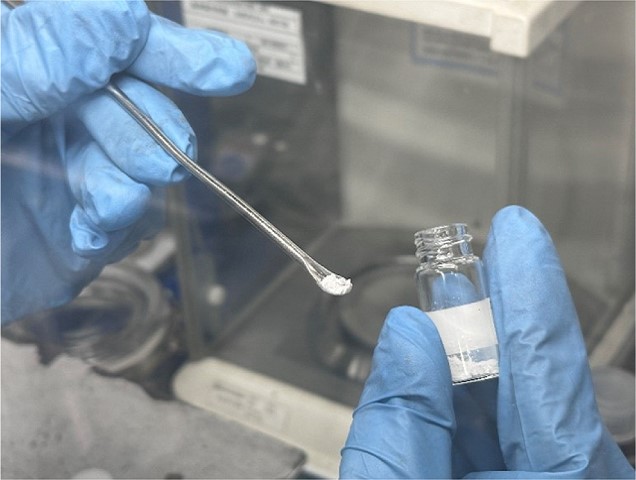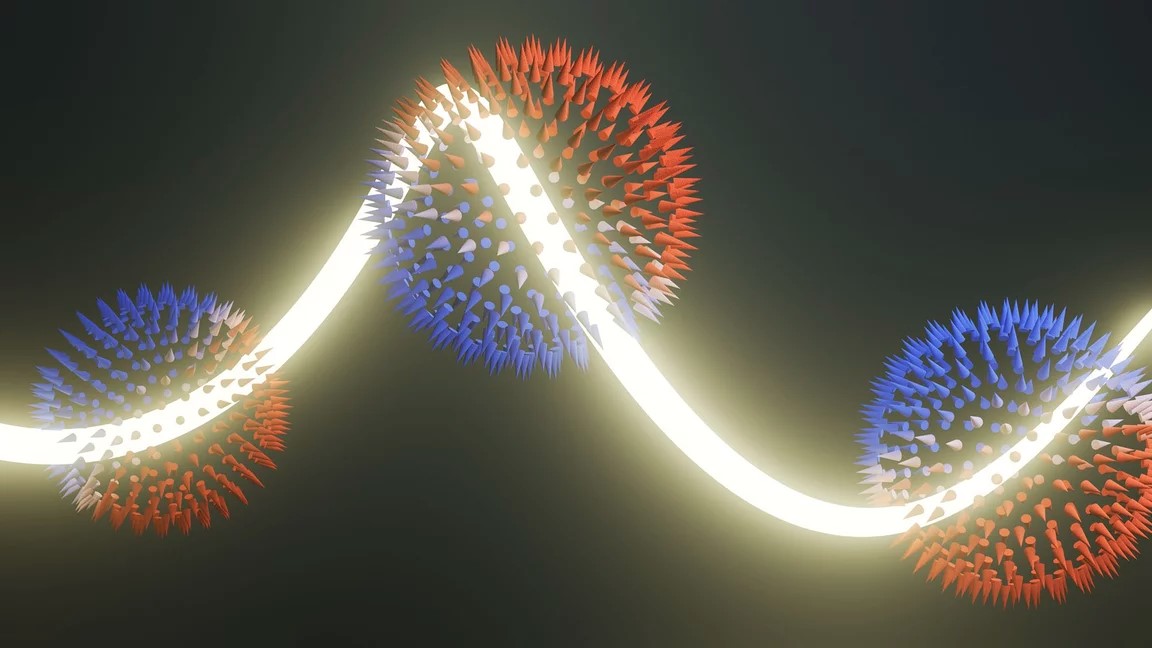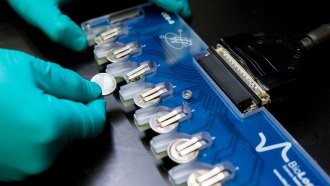UIC Graduate Student’s Novel Material Designs May Unlock Room-Temperature Superconductors
New material designs developed by University of Illinois Chicago PhD candidate Adam Denchfield could help scientists tackle one of the most ambitious challenges in physics: creating superconductors that function at standard temperatures and pressures.

Figure 1. A rare earth hydride structure that may achieve high-temperature superconductivity (Graphic: Adam Denchfield)
Superconductors, known for their zero-resistance electricity transmission, are key in technologies like MRI machines and power systems. However, these materials must currently be cooled to extremely low temperatures, limiting their practical use. Researchers around the world are on a mission to discover materials that could achieve superconductivity at “very high” temperatures — ideally, near room temperature — without requiring energy-intensive cooling. Figure 1 shows a rare earth hydride structure that may achieve high-temperature superconductivity.
In a recent study published in the Proceedings of the National Academy of Sciences, Denchfield, together with UIC physics professors Hyowon Park and Russell Hemley, introduced three novel designs for superconducting materials. Computer simulations of these designs revealed promising properties for enabling high-temperature superconductivity [1].
For decades, scientists have searched for materials that could support superconductivity at temperatures high enough for practical applications, such as advanced power grids, efficient electric motors, and levitating trains. A controversial 2023 study claimed a rare earth element-based superconductor, specifically involving lutetium, could operate near ambient conditions. The debate inspired Denchfield to revisit historical research on related materials, known as rare earth trihydrides.
[2] Denchfield’s exploration of studies from the 1960s revealed unusual conductivity behaviors in rare earth trihydrides that remain unexplained today. He found that unique arrangements of lutetium, hydrogen, and nitrogen atoms in these compounds could enable high-temperature superconductivity.
Building on this, Denchfield and the team explored whether other elements related to lutetium, such as yttrium and scandium, might yield even better results. After extensive simulations, they identified three distinct cubic structures with potential for even higher superconducting temperatures.
“We basically put forward three template structures of increasing complexity that we want other people to be able to take and mess with, plug and play different elements,” Denchfield said. “I would describe this as an exploratory paper, a motivational and inspirational work that should inspire the search for a whole new class of structures that could be very high-temperature superconductors.”
The new material designs exhibit superconductive behavior at critical temperatures above 200 degrees Kelvin (-100 degrees Fahrenheit), and Denchfield believes some designs could ultimately reach the sought-after “holy grail” of superconductivity at room temperature and ambient pressure. Experimental synthesis and testing will be the next step in verifying these predictions.
Professor Hemley, reflecting on the potential impact, added, “The prospects for new classes of related materials with different compositions is the latest chapter in our exciting efforts to discover and create new materials that could one day revolutionize energy technologies.”
Source: University of Illinois Chicago
References:
- https://www.eurekalert.org/news-releases/1063729
- https://www.sciencedaily.com/releases/2024/11/241105113846.htm
Cite this article:
Hana M (2024), UIC Graduate Student’s Novel Material Designs May Unlock Room-Temperature Superconductors, AnaTechMaz, pp. 66















